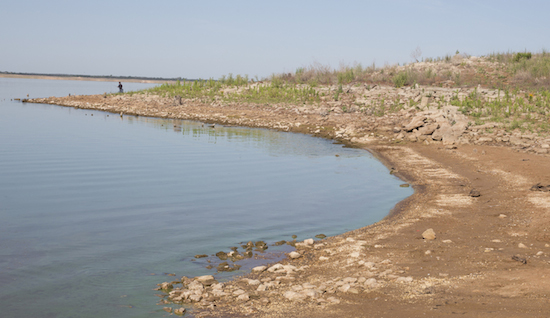What Is the State Water Plan?
Every five years the Texas Water Development Board creates a new State Water Plan. The Plan projects long-term water demands for the 16 different regions in Texas, and addresses the needs of water user groups such as municipal, agricultural, manufacturing, and steam-electric power.
Data shows that Texas clearly needs a more comprehensive approach to sustaining the water supply for people and the environment. The State Water Plan needs to be reformed with our actual water needs in mind. The Plan also needs to be funded in a way that promotes use of already developed water resources.
In 2013, Proposition 6 passed, creating a new state water fund for water conservation projects. This fund is called the State Water Implementation Fund for Texas (SWIFT). Along with Prop 6, the Texas Legislature passed House Bill 4 (HB 4), which set out the basic provisions and tasked the Texas Water Development Board (TWDB) with administering SWIFT.

How Can Texas Improve Water Planning?
The state needs to revise water demand projections to incorporate drought management strategies which will lead to realistic water planning across the state. In addition, when defining water “needs” the state plan needs to account for the water necessary to support our rivers, bays, coastal tourism, recreational fishing, and other industries that depend on a steady flow of fresh water.
While the current water plan has provisions to implement restrictions on water usage, it does not account for water needed to support healthy environmental flows.
When it comes to making a change to our water plan, the two entities involved are the Texas Water Development Board and the Regional Water Planning Groups. Some regional planning groups have made proactive steps by assessing what river flows and bay inflows could look like in the future if no positive changes are made to the planning and permitting, but the groups did not look at ways of maintaining adequate flows for healthy rivers and bays.
In 2007, the 80th Legislature established Senate Bill 3 (SB 3) which set standards to protect environmental flows by gathering scientists and technical experts to collect and analyze environmental flow data. This data is then factored into new water permits or water diversions. The data collected is aimed at addressing the following issues:
- How much water is needed to maintain the health of the state’s rivers and coastal estuaries?
- How much water should be protected for environmental flows when issuing new water use permits?
- How do we go about making a water supply available if the volume required for healthy environmental flows is not available?
- A timeline for when water is needed to support the environmental flows.
Consideration of the Water-Energy Nexus
Fifty percent of all U.S. water withdrawals are related in some way to power generation. The movement toward renewable, non-water-intensive energy like wind and solar, coupled with retiring coal-fired power plants are big steps forward in changing the water use landscape.
Reservoirs or Conservation?
When developing a water plan, it is important to look at the impact the proposed methods and practices can have on both the economy and the environment. Overbuilding of water infrastructure in the form of dams and reservoirs can be harmful to the environment by displacing waterline ecosystems. In addition, reservoirs are inefficient during hot summer months due to evaporation. In 2011, more than 190,000 acre-feet of water was lost due to evaporation from the Lower Colorado River Authority’s (LCRA) Highland Lakes. By comparison, that same year, the entire City of Austin used 107,000 acre-feet of water, nearly half of what the Highland Lakes lost.
Aquifer Storage and Recovery
When looking for a way to ensure adequate water supplies year round, Aquifer Storage and Recovery (ASR) is a method that is more efficient and less costly than reservoirs, and still allows for water to be stored. ASR works by injecting water into aquifers at times when there is a surplus of water. ASR eliminates the concern of water loss through evaporation. One risk with ASR is that environmental flows would get depleted and groundwater levels would fall below adequate flow standards. Another concern is aquifer contamination. Water that naturally percolates into an aquifer goes through a series of natural chemical changes and there could be contamination issues if that process is bypassed. The greatest benefit to ASR is it reduces the need to construct expensive and environmentally harmful projects like dams, reservoirs, and pipelines.